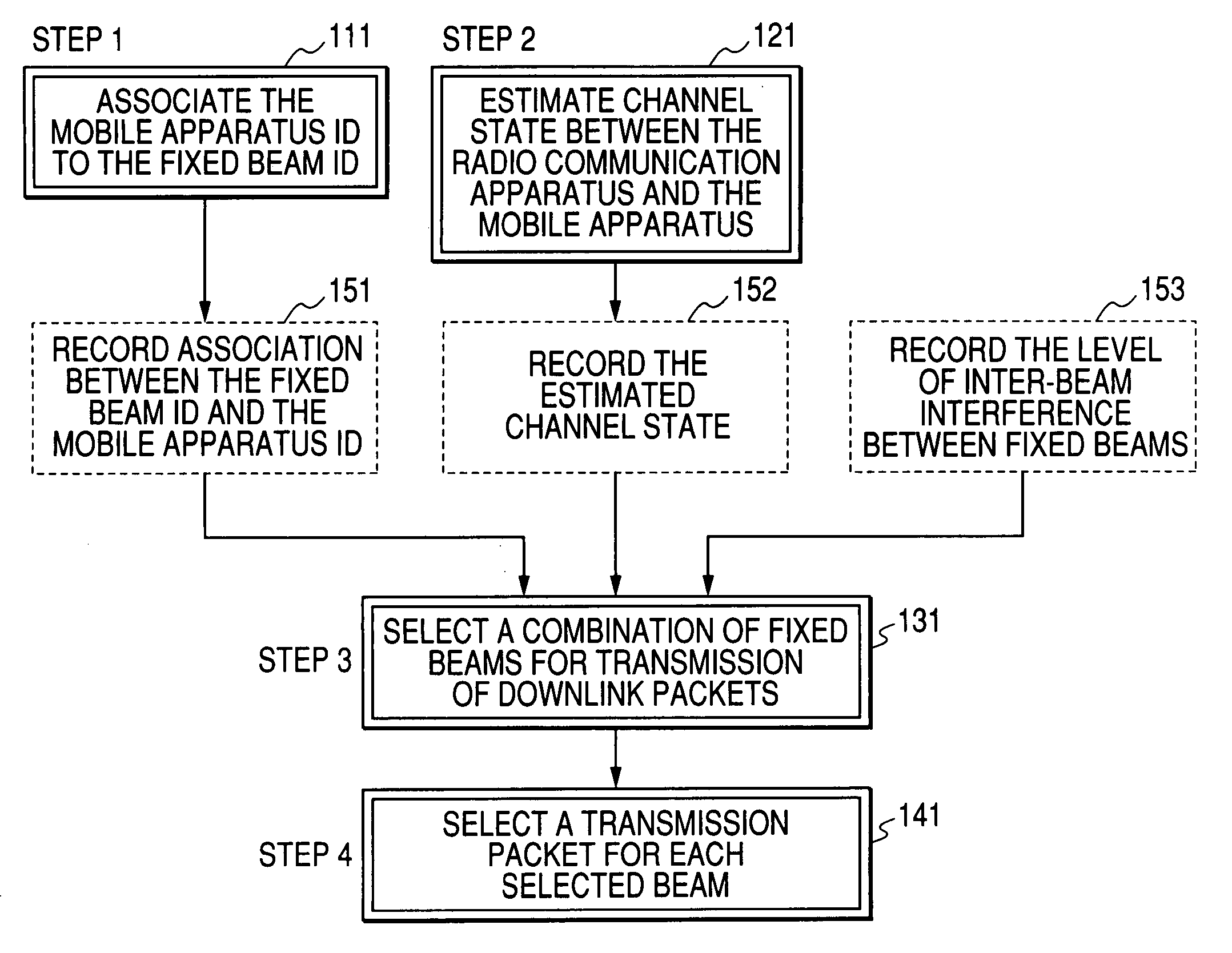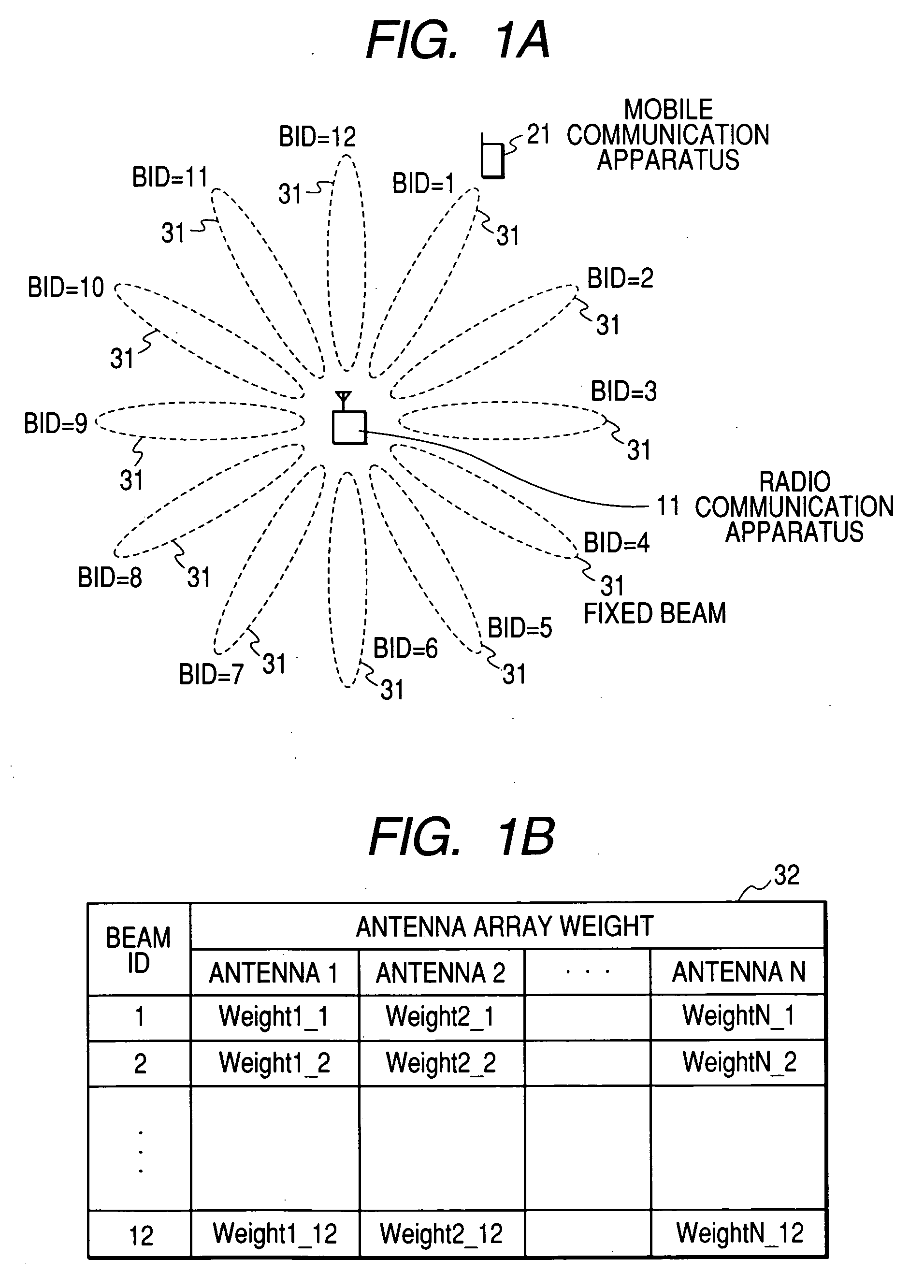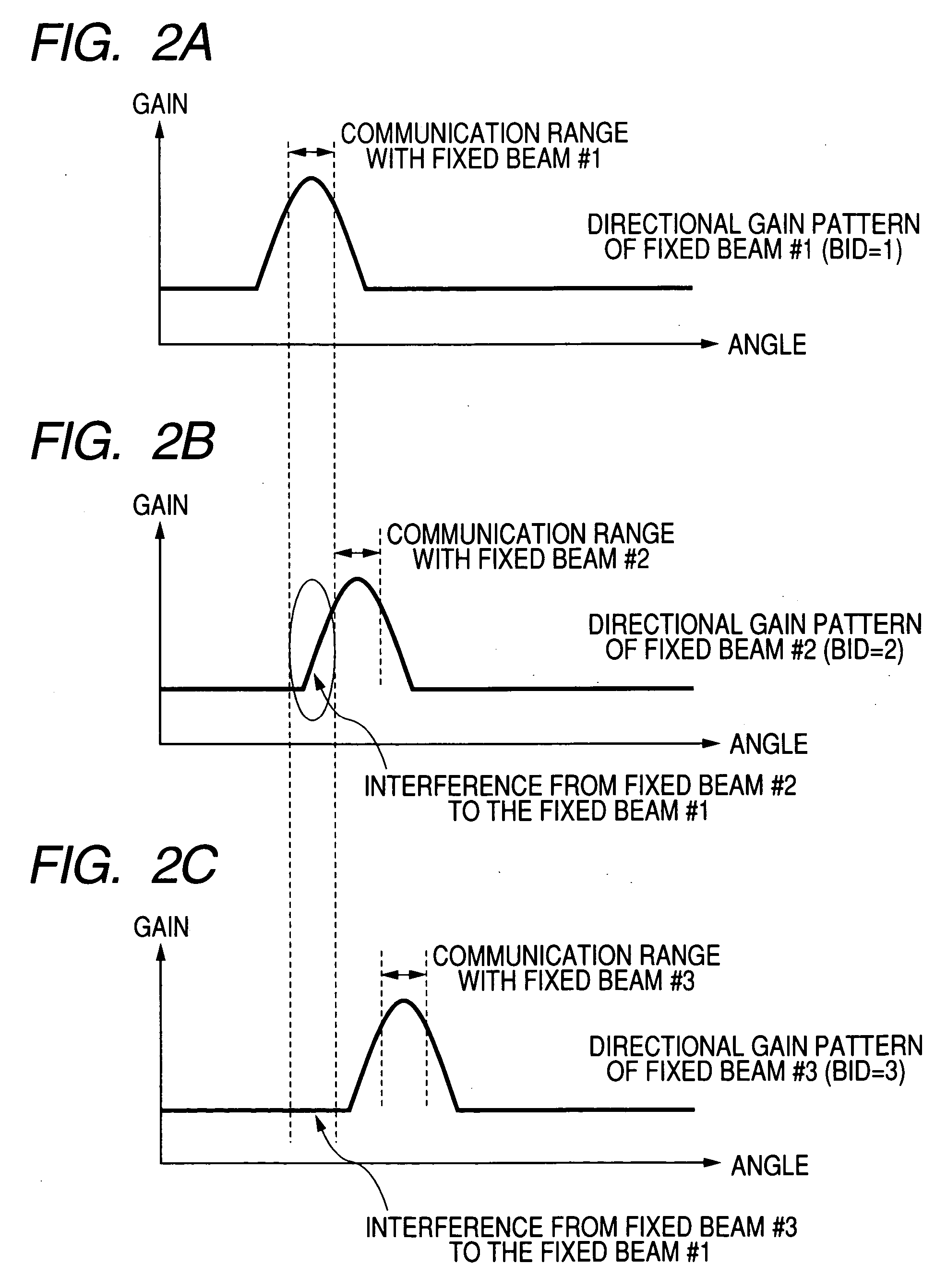Radio communication apparatus and packet scheduling method
a radio communication apparatus and packet scheduling technology, applied in the field of radio communication apparatus and packet scheduling method, can solve the problems of reducing the optimal solution at the time of adaptive control execution, increasing the interference in the local cell, and reducing the cell throughput, so as to reduce the computation amount of array weights for each mobile apparatus, enhancing cell throughput, and reducing the computational load of the radio communication apparatus.
- Summary
- Abstract
- Description
- Claims
- Application Information
AI Technical Summary
Benefits of technology
Problems solved by technology
Method used
Image
Examples
first embodiment
[0055]FIG. 3 shows the packet scheduling method according to the present invention.
[0056] A packet scheduling method shown in FIG. 3 comprises: a first step (111) in which the BID allocation unit 202 associates a mobile apparatus ID (MID) residing in the cell with a fixed beam ID (BID) of the radio communication apparatus and records the association between both IDs (151) into the ID memory 206 (151); a second step (121) in which the rate decision unit 210 estimates the channel state between the radio communication apparatus and a mobile apparatus and records the estimated channel state (152) for each mobile apparatus into the memory; a third step (131) in which the scheduler 208 selects a combination of fixed beam IDs to be employed for downlink packet transmission by referring to the records (151, 152) stored in the first step and the second step and the records of inter-beam interferences between fixed beams (153); and a fourth step (141) of determining mobile apparatuses to whic...
second embodiment
[0058]FIGS. 4A and 4B show the packet scheduling method according to the present invention. FIG. 4A shows a flowchart to be executed in the above third step to select a combination of fixed beams by referring to the inter-beam interferences between fixed beams, and FIG. 4B shows its work table.
[0059] The work table indicates combinations of BIDs (beam IDs), their serial numbers (No.), and status indicating whether multiplexing of each combination is allowable. Since the total number of combinations of BIDs is all combinations of two or more multiplexed beams (channels), it is expressed by formula 1, where M is the number of fixed beams. In FIG. 4B, an example where the number of fixed beams is three is presented. In this case, four combinations of BIDs are created.
ΣMCn(n=2 to M) (1)
[0060] The flowchart will be explained in order. First, the status field is initialized to OK for all combinations of BIDs in the work table. After the initialization, following steps (a) to (c) are r...
third embodiment
[0067]FIGS. 5A and 5B show the packet scheduling method according to the present invention. FIG. 5A shows a flowchart to be executed in the third step (131) to select a combination of fixed beams by referring to the states of the channels toward respective mobile apparatuses, and FIG. 5B shows its work table.
[0068] The work table indicates, in association with BIDs, MIDs and representative rate values per BID (Rate). The BIDs and MIDs are determined from the association records (151) between fixed beam IDs and mobile apparatus IDs. A unit of the rate may be any kind if it corresponds to transmission rate such as bits per second. In FIG. 5, the rate unit is kilobits per second (kbps).
[0069] The flowchart will be explained in order. First, the work table is initialized and cleared. After the initialization, following steps (a) to (e) are repeated for all BIDs: [0070] (a) specify a BID; [0071] (b) obtain all MIDs associated with the BID; [0072] (c) obtain the channel states for each M...
PUM
 Login to View More
Login to View More Abstract
Description
Claims
Application Information
 Login to View More
Login to View More - R&D
- Intellectual Property
- Life Sciences
- Materials
- Tech Scout
- Unparalleled Data Quality
- Higher Quality Content
- 60% Fewer Hallucinations
Browse by: Latest US Patents, China's latest patents, Technical Efficacy Thesaurus, Application Domain, Technology Topic, Popular Technical Reports.
© 2025 PatSnap. All rights reserved.Legal|Privacy policy|Modern Slavery Act Transparency Statement|Sitemap|About US| Contact US: help@patsnap.com



